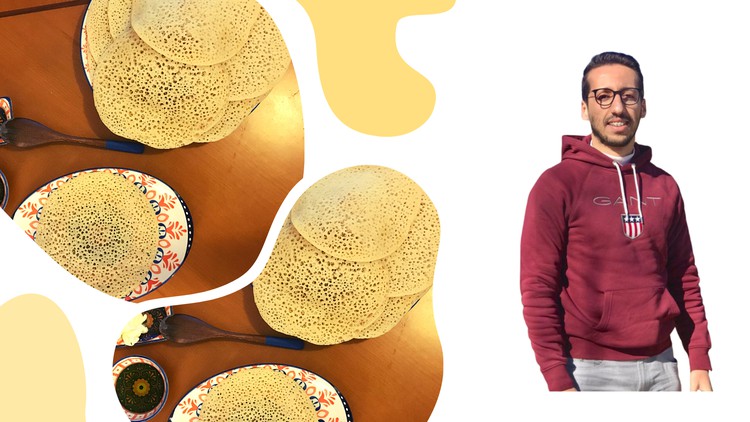
Moroccan Traditional Breakfast: Pancakes “Beghrir”
What you will learn
The key ingredients used in making Moroccan pancakes, such as flour, semolina, yeast, and oil.
Traditional techniques for making the dough, shaping the pancakes, and cooking them on a griddle.
Different variations of Moroccan pancakes, including adding fillings like cheese, vegetables, or honey.
How to store and reheat the pancakes.
Tips and tricks for perfecting the pancakes, including how to adjust the recipe based on humidity and altitude.
The cultural significance of Moroccan pancakes and their role in Moroccan cuisine.
Description
Moroccan traditional pancakes, mostly knowns as Beghrir or baghrir, are spongy, melt-in-your-mouth made from a crepe-like semolina batter. Light and tender, these pancakes are characterized by a unique honeycomb-like appearance. This is a result of yeast in the batter, which causes hundreds of bubbles to rise and break on the surface of the pancake while it cooks.
Start your holiday breakfast tradition by making Moroccan pancakes, rarely eaten plain. Instead, a sweet topping can make a tasty difference. Moroccans are most likely to enjoy them dipped in syrup made from butter and honey, or they might be served with cream cheese, olive oil, or jam on the side.
Moroccan Pancakes are usually cooked only on one side. However, in some regions, the cooks will flip them over briefly; in that case, they might be called things.
By the end of the course, you will have the skills and knowledge to make delicious Moroccan pancakes in your kitchen and impress your friends and family with your newfound culinary expertise.
Note: I am fully committed to helping you learn and master the secrets of Moroccan cuisine. Let’s meet inside to build your first stunning Moroccan pancake.
Now it’s your time to shine.
Content